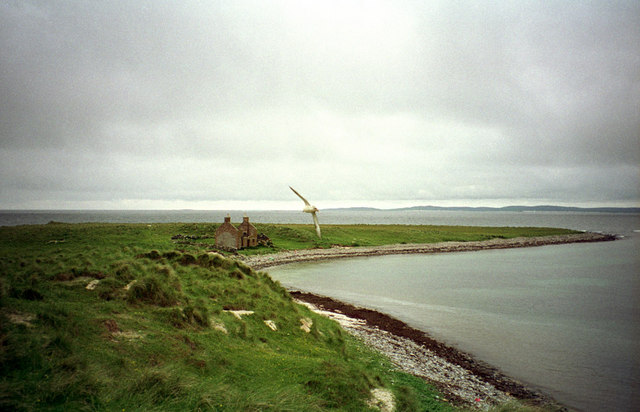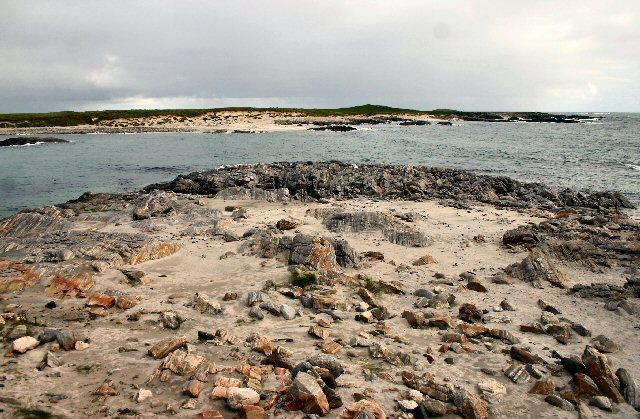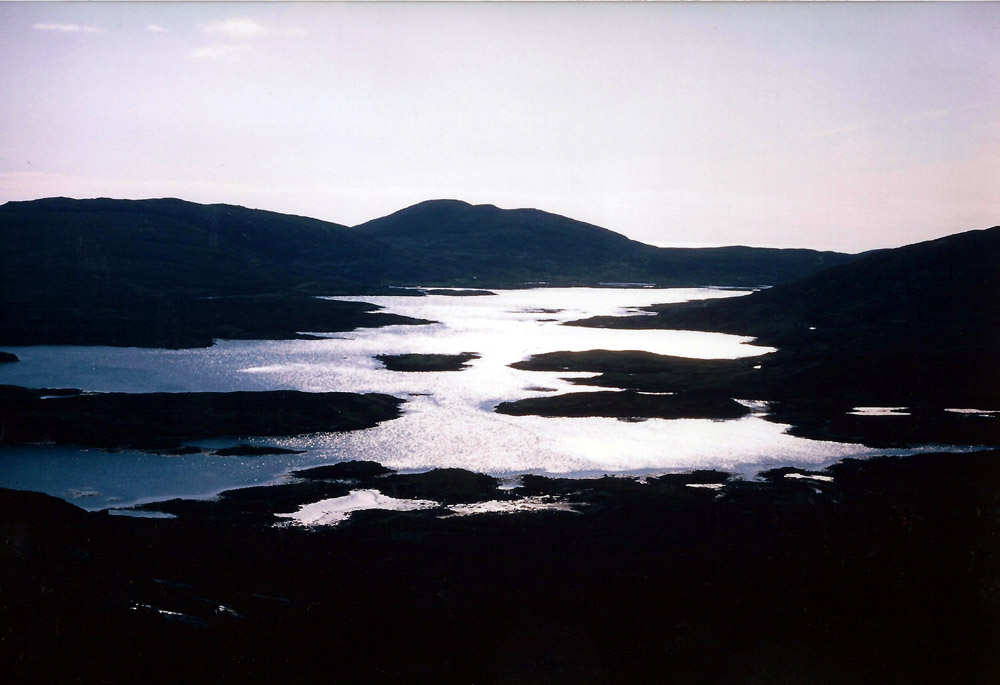![]()
![]()
South Uist, Loch Eynort 1987.
There isn't a proper list of officers and members in the report for this expedition, nor a section labelled 'Leaders report' so I have gleaned from the report as many names as have been mentioned. If you went on this trip and can remember anyone not listed, or have any photos, stories, memories etc I'd love to hear from you (e-mail on home page). Nick
Names from the report & Steve Hobbs:-
Leader:- Richard Young
Jane Young, K.S.Thomas, Claire Trocme, Terrence Ilott, Marie-Anne Charrier, Liz Todd, Jonathan Orr, Mark Trafford,
Stephen Hobbs, Wanda Hayman, Erica Dunmow,
Walesca, Sally, Segina, Diane, Rory, Andy, Ian, Ray, Rachel, Roy, Alison, Phil. [Making 24 in all]
The group photo shown below has 21 people so the numbers are about right.
SOUTH UIST
|
Photo by Steve Hobbs |
||
|
A Trip to the Monach Isles. A positive contribution to nature conservancy in the Outer Isles had been planned in a trip to the Monach Isles to count the birds. Ian was a definite member, nay leader, of the expedition but the other constituents were yet to emerge. The initial appeal of a few days away from it all began to pall as people felt considered: either they did not want to miss the fellowship of the main party; or did not want to experience the bleak cordinors and vomiting Fulmars which the Monach Isles promised. Even to the morning of departure there were last minute changes but the final team was as follows Ian, Terrence. Ray, Rachel. Jane and myself. The weather for the trip seemed glorious and we packed furiously with last minute instructions on how to erect or dismantle the tents in BAD weather!! The food was stored without much enthusiasm and with little thought to the amount of Shreddies that would be required. |
||
|
We reached the appointed boatman a trifle late in a minibus packed to the gunwhales. The crew had not surfaced that morning, possibly due to a hangover, and the thought that the trip might be off. This gladdened the hearts of some. But finally everyone was ready and we drove to the point of embarkation to view the "Crystal Sea". Was this boat to take us to a larger sea-going vessel or was this THE boat? Those remaining knew they had made the right decision: those leaving could not now back out in such a public place. We boarded, and Willie Stewart (the captain) was in charge. We chugged out through the myriad of Islands and glided under the causeway towards the west. The sea swell grew, the sea-gulls floated past and North Uist - the mainland - receded as the Monach Isles sharpened on the horizon. The Atlantic Ocean bullied us for 2½ hours until we landed on a sun-kissed beach of white sand and blue sea. It was suggested that we land quickly as the tide was coming in and we slowly walked up the sand dunes. |
 |
Storehouse at Thearnish Ruin of storehouse on the north tip of Ceann Iar of the Monach Isles. It was used by the keepers of the now disused lighthouse on nearby Shillay (NF59 62) 12/06/1999 © Copyright Marc Calhoun |
|
Awaiting us at the top of the dunes was the most glorious pastoral scene of lush grass, with bright yellow buttercups bobbing, sheep grazing, rabbits scurrying to their warrens and the birds flying up to warn others of our approach. The sun blazed in the luminous blue sky and we were very glad to be there. Jonathan Orr. |
||
|
Our Trip to the Monach Isles. A place where there's green, green grass, a carpet of yellow buttercups, white sweeping sand dunes, sea alternating between deep blue and Jade green glistening In the sun, seems almost too good to be true, yet this was the experience of six of us when we visited the Monach Isles during the second week of the expedition. Ian successfully managed to convince me that It didn't matter that Im not an expert birdwatcher, and my spirit of adventure lasted for a whole 20 minutes or so, until it was too late to chicken out. I really didn't know what to expect - none of us did really, so when we saw our mode of transport to the islands, Willie's lobster-catching large wooden dinghy, it was perhaps for the best that I saw the funny side of things. Rory decided it would be rather fun to lay along the bow and made an excellent figurehead to our noble vessel. It was quite choppy when we got out into the open sea yet the rest of us were well sheltered behind our rucksacks. Any possibility of conversation with Willie and his companion, John, proved impossible because of the noise of the engine, yet smiles were exchanged and they seemed quite happy to have us on board. |
||
|
|
On arrival we all gazed in wonder at the mini-Paradise around us and set about putting up the tents in the shelter of one of the ruins there, a stone's throw from the main loch, on Cean lar. After dinner, which was a scrutiny vegetarian dish a la Jane, we went exploring. It was such a gorgeous evening, the passage of water between the islands was dotted with seals playing peepbo. Roy captured their mood when he said it was as if they were having swimming lessons. Later in the evening we heard strange wailing sounds, and just as Alison suggested it night be Jane playing a joke, Ian asked us if we could hear the seals singing. I found this really wonderful and fascinating, and this was one of the loveliest things about the trip for me. The sheep were also comical: some of them appeared to be half sheared yet very shaggy in parts I wondered whether these were the "cool dudes" of the flock, keeping up with the latest fashion in hair coiffure. At the same time I felt there was a really sad feeling about the island, especially where the ruins stood. It was a strange feeling to think that this was once a thriving community and that now the island stands alone and uninhabited, home only to birds and seals, visited only every now and again during the summer by fishermen and the likes of us. It reminded me of the Treasure Island encountered by the Famous Five, so that I kept on half expecting to stumble on a secret passage, and noted every footprint in the sand with subdued excitement. Tuesday morning came damp and soggy from rain during the night, but undaunted we split into groups and divided the Island up so as to have some kind of method in madness. |
|
|
Up until we'd arrived, I'd had this rather odd picture in my mind of us all dashing around a little barren rock, trying not to count the same bird twice, but when we actually began it didn't seem quite so silly, although obviously there's a limit to the accuracy you can obtain. Jane and Terrence were assigned the Southern part of the island, while Ian, Alison and I took the Northern areas. Rory did a thorough and comprehensive Fulmar count of the whole island, some task which we all agreed he did very well. Fulmars seemed to be nesting everywhere, including the ruins, which meant that us ladies had to double check before we went about our business!! I don't know whether Ian, Terrence and Rory had similar problems in the "gents' dunes!! Ian suggested I might like to go swimming and do a seal count but I felt I should do my bit for the cause, and I'm really glad I did, because my interest in bird watching was kindled and I found myself enjoying the experience, despite trying to scramble over wet rocks in the rain and getting eyestrain from trying to peer through the binoculars too avidly for too long. We tended to walk along a stretch of coastline and then record all that we'd seen, trying to keep our eyes on the Eider ducks, who at times paddled faster in the water, than our pace along the beach. The rain stopped for an hour or so mid-afternoon and it seemed to me as if a lovely peace came over the beach. Alison and I temporarily relaxed and let our minds contemplate joys other than the birds whizzing around (only temporary Ian, honest!!). |
 |
|
|
Before the day was out, I had learnt how to identify an Oyster-catcher, Fulmar, Turnstone, various sorts of Pippets, Eider and Shellducks, to mention but a few. Alison and I also came across what we later identified as a Gannet, on the rocks on the east coast of the island. I thought he looked really awkward and sweet until I caught a head-on view through the binoculars, when I decided I wouldn't like to be a fish when hes hungry. Evening time brought better weather, although it was still quite blowy. After Ian had braved the sea and we had all eaten, we went for a more leisurely and less intensive walk down to the Bounty advert beach, and discovered that the causeway between our island and Beamish, which you could only cross at low tide, had appeared. We were umming and arring about whether to cross, when to our amazement, we spotted four figures on the highest point of Beamish, and to our even greater amazement began to cross the causeway towards us. Rather put out that our apparent isolation might be an illusion, Ian suggested that they actually lived on Beamish and crossed the causeway for holidays!! Since this didn't seem too feasible somehow, it was quite a relief to find out that they had travelled up from Dublin in their yacht and had moored round by the third Island. Apparently they had been rather puzzled by us too and to our amazement had concluded that we were a wreck, presumably because we were sitting next to a rather large tree trunk that for some reason was on the beach. Poor Terrence, beset by a rather vicious attack of hiccups, headed back for camp to join Roy at this point, while Ian, Jane, Alison and myself nipped over to the other island, which turned out to be even more deserted and beautiful than "ours". We couldn't stay long for fear of being cut off, so we sloshed back "home", wishing we were wearing our wellies and trying to pretend that our walking boots weren't really letting water in by the bucketful. We were glad that we actually managed to get over to this middle island, although we didn't have time to do any sort of bird count there, and we were advised by our fishermen friends not to try to get over to the third island. |
Monach Islands, the eastern end of Ceann Iar, looking south-east towards Shibhinis. 23/08/2006 © Copyright Bob Jones |
|
 Late evening or early morning? Photo by Steve Hobbs. |
|
The fishermen stay in the only intact house on the island and at regular intervals took pity on our soggy boots and rather dishevelled appearances and invited us in for a "wee dram!" Each night after it had become dark, a dim glow appeared at their window which I found rather eerie and added to my feelings that I was taking part in a Famous Five adventure story. I think we were all quite sad to leave the islands on the Wednesday. Terrence consented on how it was funny how we now regarded South Uist as "the mainland". We had a final look around in the morning in bright, warn sunshine and had our lunch sitting on the rocks, which was rather jolly. I enjoyed a leisurely paddle and when the tide was right, Willie and John cane and, sitting amongst the lobsters, we made our way home. Rachel. |
|
|
|
I don't remember wine boxes on our expeditions - and that looks like a proper table! Thanks to Steve Hobbs for most of these photos |